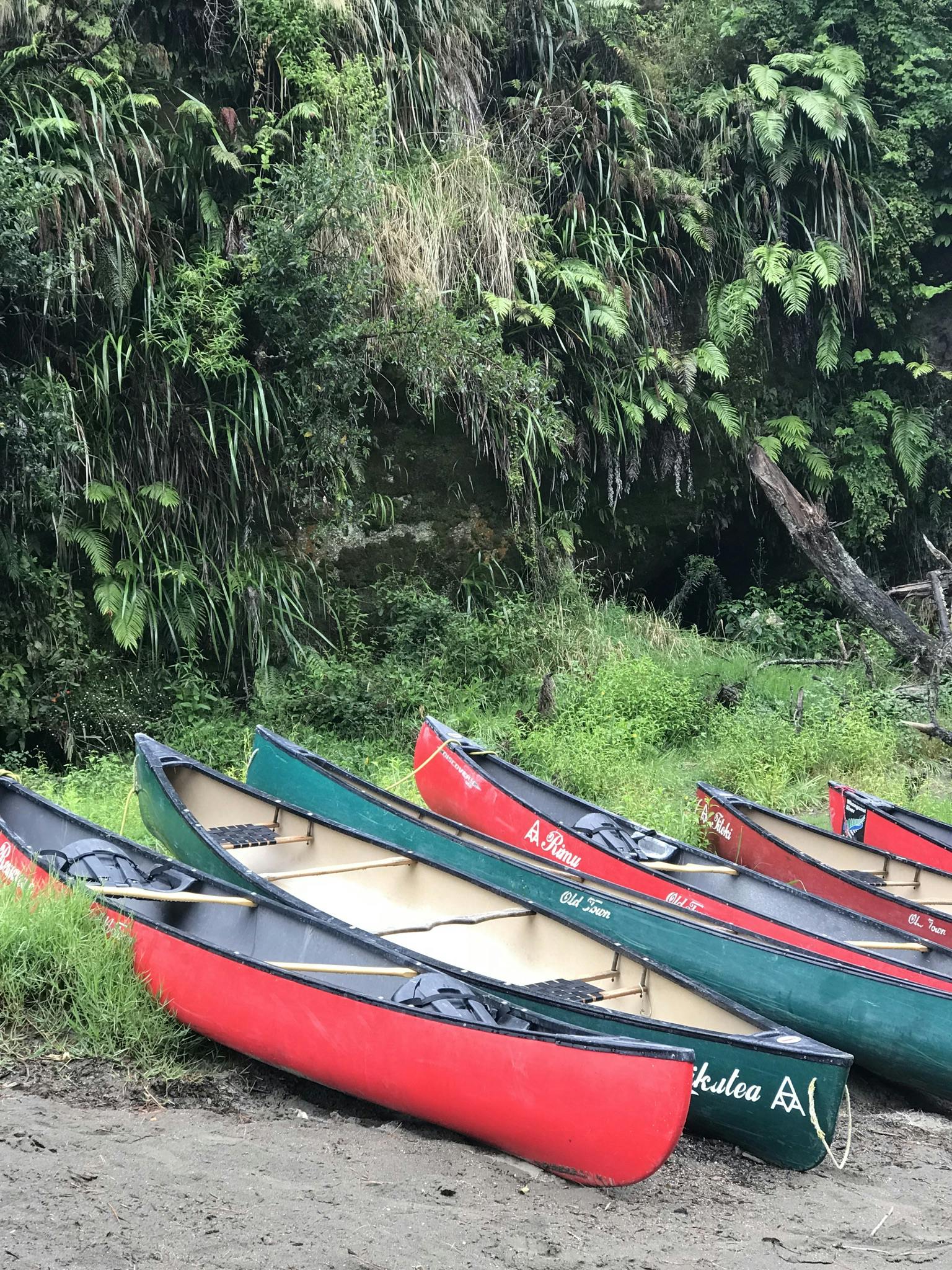A handy introduction to Māori bush kai
Whanganui River guide Hayden Potaka reckons you can pack a little lighter on a multi-day journey down New Zealand’s third longest river.
No need for zip-lock bags of trail mix. And definitely say goodbye to the stock-standard dehydrated dinners trampers love to carry.
“Simply by foraging in the bush you can get everything you need for a tasty kai,” says Potaka, of Nga Rauru and Te Ātihaunui-a-Papārangi, who’s spent a decade canoeing the 290km river.
Some of Potaka’s favourite ingredients include kawakawa (plants with heart-shaped leaves good for seasoning dishes), fern shoots (also known as pikopiko or bush asparagus) and tuna (or freshwater eel).
Horopito leaves (from the New Zealand pepper tree) also make Potaka’s grocery list, alongside koura (or fresh water crayfish), puha (sow thistle) and even wild goat.
“Learning about these foods and eating them as you journey down river is one way to connect with the awa itself – and to reclaim it as a place to come to for recreation and reflection,” he says.
In October 2017, Potaka took over Unique Whanganui River Experience, a canoeing business, with the goal of offering tourists three-day canoeing trips where they can learn about the river’s cultural heritage, as well as the traditional Māori foods that can be found nearby.
Before that, he spent six years chairing a committee responsible for bringing groups of up to 160 iwi members down the river on an annual canoeing wananga aimed at sharing knowledge about the river, its food and its cultural history.
Last summer, Potaka partnered with Māori-Samoan chef Monique Fiso to give people a taste of Māori fine-dining over six weekends at Puraroto Camp.
Potaka took people to and from camp, teaching them about the river, how to canoe and some of the Māori culture relevant to the Whanganui River.
“I grew up in the bottom reaches of the river and have lived in and around the river pretty much all my life. This is my opportunity to give others an insight into how the river can help sustain us – not only in terms of providing a place to come to and enjoy, but also as a place of physical and spiritual nourishment,” says Potaka.
5 Māori food ingredients to enjoy along the Whanganui River
- Use horopito leaves (from the New Zealand pepper tree) to replace conventional pepper. Look for green leaves with red speckles – and keep in mind there are several varieties of horopito, some are more peppery, while others have a spicy citrus flavour.
- To add a light minted flavour to bush tucker, use kawakawa leaves. Ideally, you’ll want to dry them out, grind them and then use them to season your dishes. Alternatively, you can enjoy kawakawa as a tea or tonic.
- If it’s a fresh flavour or some crunch you want, then reach for pikopiko fern tips. But do your research to find out which varieties are edible or you’ll end up with a bitter (possibly carcinogenic) variety.
- Freshwater tributaries can be a great source of tuna (eel) and koura (freshwater crayfish), which you can fish for using either nets or your hands.
- Puha (sow thistle) is a dark green plant or weed that grows plentifully along the river. Typically it has bitter taste, but can be eaten raw or cooked. To lessen its bitter taste, rub puha plants together under running water as part of your food preparation.
Can’t identify these plants?Download the free NZTrees app built by AUT University. Find it by searching for ‘NZTrees’ wherever you get apps. |







